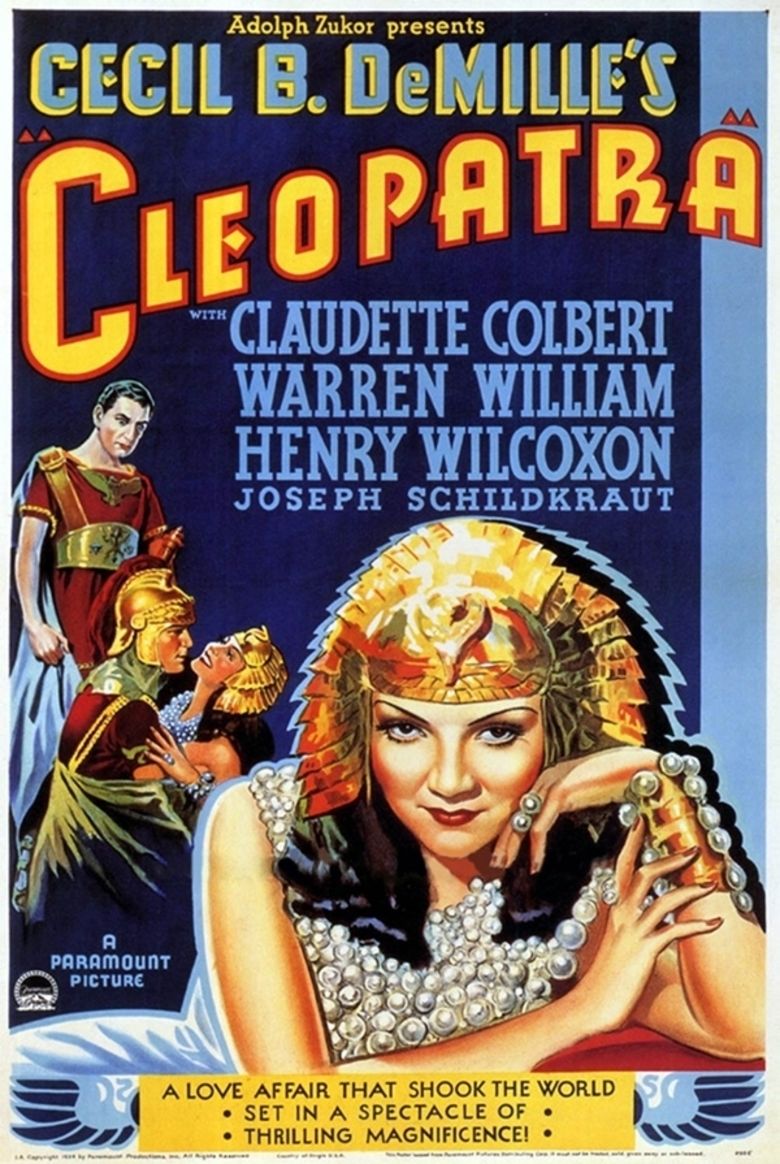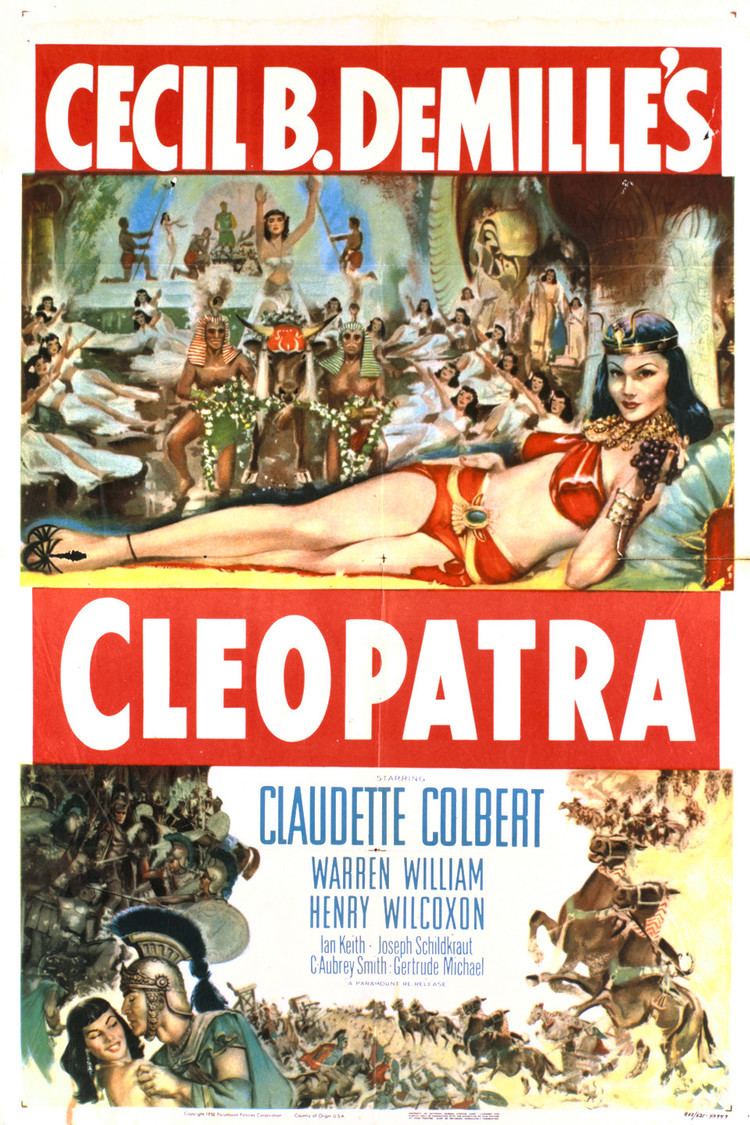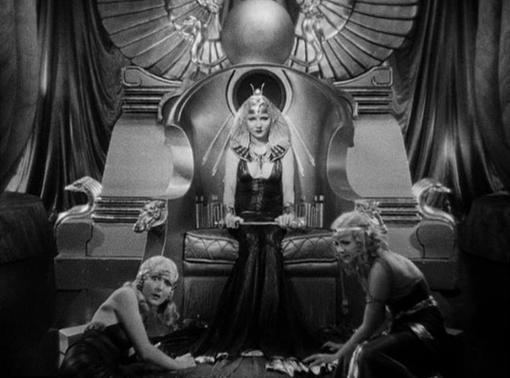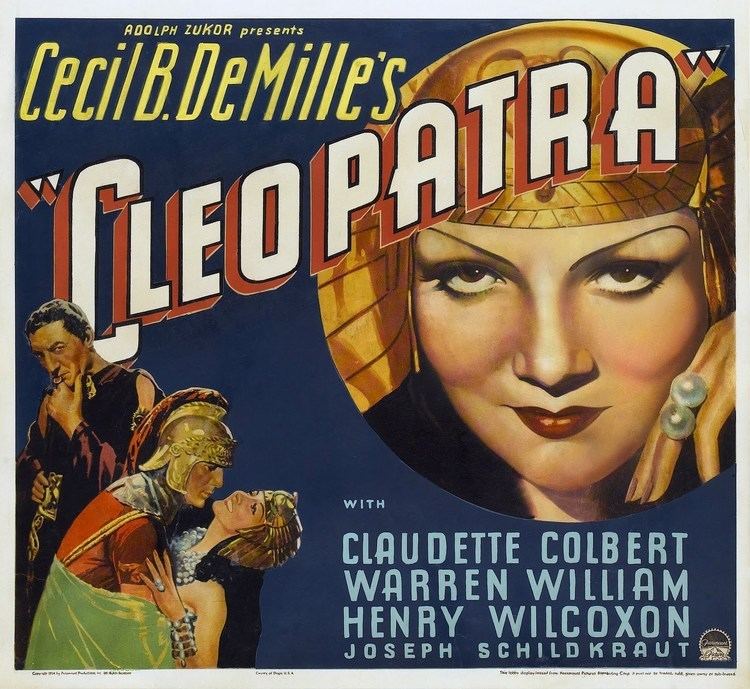Cleopatra (1934 film)
7.8 /10 1 Votes
88% Rotten Tomatoes Genre Biography, Drama, History Music director Rudolph G. Kopp Language English | 6.9/10 IMDb Duration Country United States | |||||||||||||||||||||||||||||||||
 | ||||||||||||||||||||||||||||||||||
Release date August 16, 1934 Cast Similar movies Raiders of the Lost Ark , The Prince of Egypt , The Ten Commandments , The Mummy , Exodus: Gods and Kings , X-Men: Apocalypse | ||||||||||||||||||||||||||||||||||
Cleopatra blu ray official trailer hd
Cleopatra is a 1934 epic film directed by Cecil B. DeMille and distributed by Paramount Pictures, which retells the story of Cleopatra VII of Egypt. It was written by Waldemar Young, Vincent Lawrence and Bartlett Cormack, and produced and directed by Cecil B. DeMille. Claudette Colbert stars as Cleopatra, Warren William as Julius Caesar, and Henry Wilcoxon as Mark Antony.
Contents
- Cleopatra blu ray official trailer hd
- Plot
- Production
- Reception
- Academy Awards
- Home video release
- References

Plot

In 48 BC, Cleopatra vies with her brother Ptolemy for control of Egypt. Pothinos (Leonard Mudie) kidnaps her and Apollodorus (Irving Pichel) and strands them in the desert. When Pothinos informs Julius Caesar that the queen has fled the country, Caesar is ready to sign an agreement with Ptolemy when Apollodorus appears, bearing a gift carpet for the Roman. When Apollodorus unrolls it, Cleopatra emerges, much to Pothinos' surprise. He tries to deny who she is. However Caesar sees through the deception and Cleopatra soon beguiles Caesar with the prospect of the riches of not only Egypt, but also India. Later, when they are seemingly alone, she spots a sandal peeking out from underneath a curtain and thrusts a spear into the hidden Pothinos, foiling his assassination attempt. Caesar makes Cleopatra the sole ruler of Egypt, and begins an affair with her.

Caesar eventually returns to Rome with Cleopatra to the cheers of the masses, but Roman unease is directed at Cleopatra. Cassius (Ian Maclaren), Casca (Edwin Maxwell), Brutus (Arthur Hohl) and other powerful Romans become disgruntled, rightly suspecting that he intends to abolish the Roman Republic and make himself emperor, with Cleopatra as his empress (after divorcing Calpurnia, played by Gertrude Michael). Ignoring the forebodings of Calpurnia, Cleopatra, and a soothsayer (Harry Beresford) who warns him about the Ides of March, Caesar goes to announce his intentions to the Senate. Before he can do so, he is assassinated.

Cleopatra is heartbroken at the news. At first, she wants to go to him, but Apollodorus tells her that Caesar did not love her, only her power and wealth, and that Egypt needs her. They return home.
Bitter rivals Marc Antony and Octavian (Ian Keith) are named co-rulers of Rome. Antony, disdainful of women, invites Cleopatra to meet with him in Tarsus, intending to bring her back to Rome as a captive. Enobarbus (C. Aubrey Smith), his close friend, warns Antony against meeting Cleopatra, but he goes anyway. She entices him to her barge and throws a party with many exotic animals and beautiful dancers, and soon bewitches him. Together, they sail to Egypt.

King Herod (Joseph Schildkraut), who has secretly allied himself with Octavian, visits the lovers. He informs Cleopatra privately that Rome and Octavian can be appeased if Antony were to be poisoned. Herod also tells Antony the same thing, with the roles reversed. Antony laughs off his suggestion, but a reluctant Cleopatra, reminded of her duty to Egypt by Apollodorus, tests a poison on a condemned murderer (Edgar Dearing) to see how it works. Before Antony can drink the fatal wine, however, they receive news that Octavian has declared war.

Antony orders his generals and legions to gather, but Enobarbus informs him that they have all deserted out of loyalty to Rome. Enobarbus tells his comrade that he can wrest control of Rome away from Octavian by having Cleopatra killed, but Antony refuses to consider it. Enobarbus bids Antony goodbye, as he will not fight for an Egyptian queen against Rome. A short montage sequence shows the fighting between the forces of Antony and Octavian, ending in the naval Battle of Actium.

Antony fights on with the Egyptian army, and is defeated. Octavian and his soldiers surround and besiege Antony and Cleopatra. Antony is mocked when he offers to fight them one by one. Without his knowledge, Cleopatra opens the gate and offers to cede Egypt in return for Antony's life in exile, but Octavian turns her down. Meanwhile, Antony believes that she has deserted him for his rival and stabs himself. When Cleopatra returns, she is heartbroken to find him dying. They reconcile before he perishes. Then, with the gates breached, Cleopatra kills herself with a poisonous snake and is found sitting on her throne, dead.
Production

The shoot was a difficult one due to Colbert contracting appendicitis on the set of her previous film, Four Frightened People, leaving her only able to stand for a few minutes at a time. Heavy costumes complicated matters further. Due to Colbert's fear of snakes, DeMille put off her death scene for as long as possible. At the time of shooting, he walked onto the set with a boa constrictor wrapped around his neck and handed Colbert a tiny garden snake.
In 1934, the Hays Code had just taken effect, so DeMille got away with using more risque imagery than he would be able to in his later productions. He opens the film with an apparently naked, but strategically lit slave girl holding up an incense burner in each hand as the title appears on screen.
The film is also memorable for the sumptuous art deco look of its sets (by Hans Dreier) and costumes (by Travis Banton), the atmospheric music composed and conducted by Rudolph George Kopp, and for DeMille's legendary set piece of Cleopatra's seduction of Antony, which takes place on Cleopatra's barge.
Reception
Mordaunt Hall of The New York Times called it "one of the director's most ambitious spectacles" and singled out Wilcoxon's performance as "excellent, especially in the more dramatic sequences." Film Daily called it a "sumptuous historical drama" with a "strong cast" and "good entertainment values". John Mosher of The New Yorker wrote that "Even as extravaganza it's moderate", and called the dialogue "the worst I have ever heard in the talkies." Variety agreed that "Often the lines drew titters that are not being angled for", but maintained, "Photographically the picture is superb."
The film was one of Paramount's biggest hits of the year.
Academy Awards
Home video release
This film, along with The Sign of the Cross, Four Frightened People, The Crusades and Union Pacific, was released on DVD in 2006 by Universal Studios as part of The Cecil B. DeMille Collection.
It has been released for home viewing several times in the United States of America, including a 75th anniversary DVD edition in 2009 by Universal Studios Home Entertainment.
In the United Kingdom, Cleopatra was released in a Dual Format DVD and Blu-ray edition on September 24, 2012 by Eureka as part of their Masters of Cinema range.
References
Cleopatra (1934 film) WikipediaCleopatra (1934 film) IMDbCleopatra (1934 film) Rotten TomatoesCleopatra (1934 film) themoviedb.org
